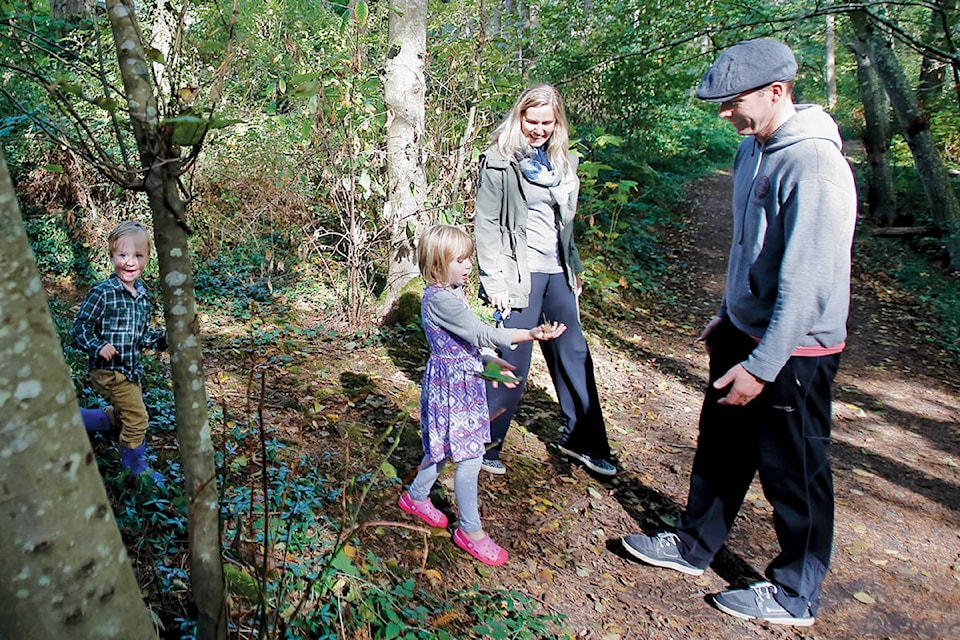How do we encourage a greater stewardship of our natural environment?
Simply experiencing the magic of nature around us when we’re young, and nurturing curiosity can be one of the most effective steps to building future stewards.
“Environmental stewardship is simply looking after and caring for nature where we live, so we can sustain these places for generations to come,” says Katie Turner, Park Stewardship Coordinator for Saanich Parks, Recreation and Community Services.
Helping children find connections between habitats, species and even ourselves can inspire them to connect and care more deeply for nature around us. For example, by learning how trees are vital to our entire ecosystem, “when we look after our greenspaces, we look after our water, we look after our air,” she notes.
“And it’s not just about caring for nature, it’s about caring for ourselves as well,” Katie says, pointing to both the mental and physical wellness benefits nature provides.
How can you encourage young stewards?
- Start by simply getting outside – The opportunities to engage curious young minds is easy in Saanich, where with 170+ parks, the natural world is often right around the corner.
- Explore and observe – Strolling the Mount Douglas trails, look up to the towering trees – can you tell them apart? – and down to the native banana slugs busy on the forest floor. Notice how much cooler you are within the forest compared to the mountain-top lookout.
Beyond the forest, explore different habitats showcased in Saanich parks, from Mount Tolmie’s Garry oak meadows to a shady ramble along Colquitz Creek, where fall brings the return of spawning salmon.
Beaches are another natural destination for unstructured time. How many kinds of seaweed can you find? How different are the bird species here compared to your own backyard? “Just allowing for that opportunity for the small people in your life to have some unstructured time to explore is so valuable,” Katie says.
These kinds of observations raise children’s awareness of how species and habitats are connected both with each other, and with ourselves, an awareness that builds natural intelligence that supports future stewardship.
Click here to learn more about building stewardship in Saanich Parks.
READ MORE: Boost your Natural Intelligence: Explore and experience Saanich Parks this summer
